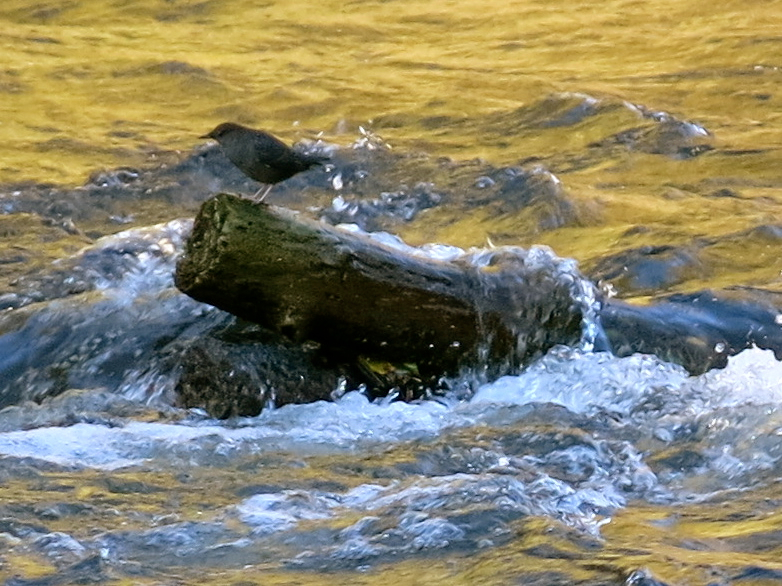
American Dipper in the Applegate River, Applegate, Oregon, near the Applegate Store and Cafe.
(As my cousin Sue pointed out, this bird is also called an ouzel, which sounds much more mysterious.)
Yet Another Unitarian Universalist
A postmodern heretic's spiritual journey.

American Dipper in the Applegate River, Applegate, Oregon, near the Applegate Store and Cafe.
(As my cousin Sue pointed out, this bird is also called an ouzel, which sounds much more mysterious.)
We got a late start this morning, and didn’t leave Van Buren, Arkansas, until nearly noon. After we had been driving a bit, we turned off at a sign that said “Oklahoma Welcome Center,” and turned into the poshest rest stop I think we’ve ever seen. It was staffed by three volunteers. One politely asked me if she could help me with something, and I said, “No thank you, I’m just waiting while she checks email,” pointing to Carol, who was sitting an a very comfortable armchair enjoying the very fast Internet service. “In that case,” she said in her Oklahoma drawl, “I’ll just kill flies,” and, picking up a flyswatter, proceeded to do just that. “Do you keep score?” I said. “No,” she said, “and I’m not doing a very good job, either,” as she missed a fly for the third time.
As we drove through eastern Oklahoma, I noticed that the land looked much greener and much less dry than it had when we drove east a couple of weeks ago. Clearly they had had rain since then.
At exit 200 for Seminole, Oklahoma, we turned off to see if Robertson’s Ham Sandwiches was open. We had seen their distinctive red-and-white billboards heading east, but we had arrived after they closed. They were open. There wasn’t much on the menu but ham sandwiches, so we each had a double ham sandwich for less than five dollars. We sat at one of the wood tables to eat our sandwiches. It was about the best ham I’d ever eaten in a ham sandwich.
We turned off the interstate at El Reno, Oklahoma. Continue reading “Heading west”
At lunch time, I drove down to the marshes at Baylands Nature Preserve. A baby American Avocet stood at the edge of the water swishing its tiny beak back and forth to gather insects and other invertebrates from the water, just like the adult avocets a few yards away. Out in deeper water, a Mallard hen watched carefully over two baby Mallards swimming on either side of her. I couldn’t help noticing the difference in the way the two species raise their young: the American Avocet is a precocial species whose young are on their own from hatching, while the Mallard is an altricial species whose adults care for their babies for some time. It seemed that everywhere I looked I saw birds nesting or getting ready to nest: Cliff Swallows building their nests of clay on the side of a building, Forster’s Terns apparently nesting on a tiny island in the middle of the marsh, Marsh Wrens warbling madly in the rushes.
I looked across the bay at the green hills of the East Bay. Except some of the lower hills at the far end of the Dumbarton Bridge don’t look all that green any more. It’s been warm for the past few days, and it looks like the rains are finally over and gone, and now some of the low hills are turning summer-brown. The higher hills and mountains are still brilliant green, but it won’t be long before they turn brown, too.
Baby birds and hills turning brown: these two markers in time are as good as any to mark the end of the winter-wet season, and the beginning of the summer-dry season.